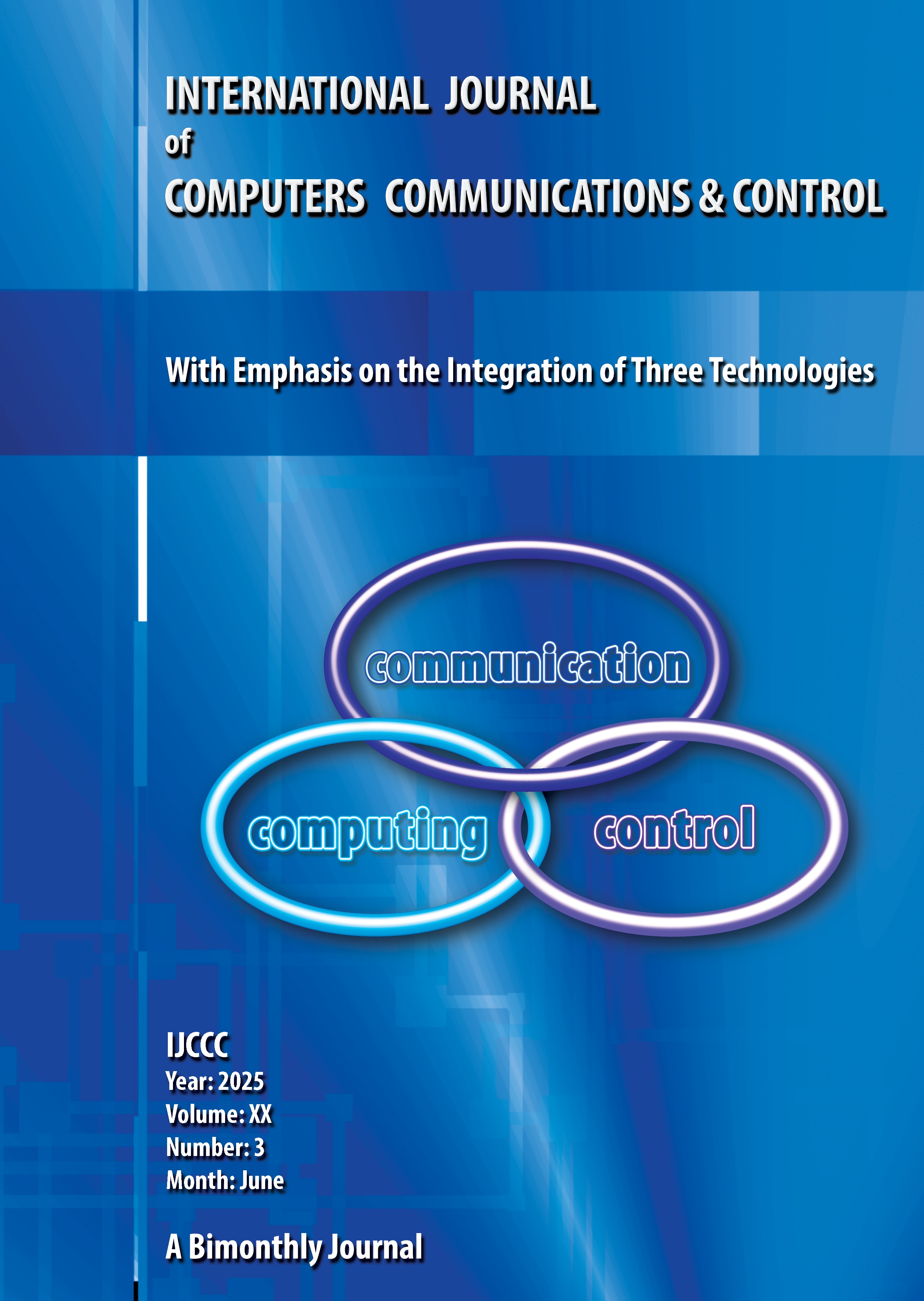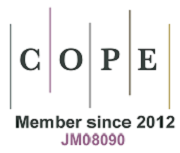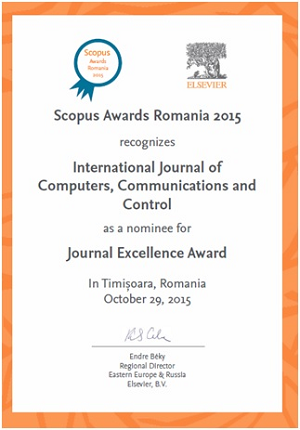Simulation-Aided Analysis of a Deviation-Based Pairwise Assessment Ratio Technique (DEPART) for MCDM
DOI:
https://doi.org/10.15837/ijccc.2025.3.7038Keywords:
multi-criteria decision-making (MCDM), DEPART, simulation-aided, ANOMAbstract
Multi-criteria decision-making (MCDM) methods provide structured approaches for evaluating alternatives based on multiple conflicting criteria. However, many existing MCDM techniques assess alternatives independently, either by aggregating weighted performance scores or by measuring deviations from reference points without a comparative basis. These approaches often fail to account for the relative nature of evaluations within the decision matrix, potentially leading to less reliable rankings. This research introduces a novel Deviation-Based Pairwise Assessment Ratio Technique (DEPART) for MCDM. Unlike conventional methods, DEPART evaluates alternatives through pairwise deviation ratios, ensuring a relative and holistic assessment. By incorporating all available decision data, this approach enhances the reliability and interpretability of rankings. To validate its effectiveness, a simulation-aided analysis is conducted. The evaluation process includes a benchmark example, a simulation analysis with varying criteria weights, and tests on randomly generated datasets with different problem sizes and performance ranges. Correlation coefficients are computed to measure consistency, while robustness is assessed using Analysis of Means (ANOM) and confidence intervals. The results demonstrate that DEPART provides stable and reliable rankings, making it a promising approach for solving MCDM problems.
References
Aycin, E.; Cerci, M.; Sonugelen, E. (2024). An Evaluation of Women’s Human Development Level using Multi Criteria Decision-Making Methods: A Case Study of OECD Countries, Economic Computation and Economic Cybernetics Studies and Research, 58(4), 109–128, 2024. https://doi.org/10.24818/18423264/58.4.24.07
Aytekin, A. (2021). Comparative analysis of the normalization techniques in the context of MCDM problems, Decision Making: Applications in Management and Engineering, 4(2), 1–25, 2021. https://doi.org/10.31181/dmame210402001a
Buchanan, J.T. (1994). An Experimental Evaluation of Interactive MCDM Methods and the Decision Making Process, Journal of the Operational Research Society, 45(9), 1050–1059, 1994. https://doi.org/10.1057/jors.1994.170.
Çelikbilek, Y.; Tüysüz, F. (2020). An in-depth review of theory of the TOPSIS method: An experimental analysis, Journal of Management Analytics, 7(2), 281–300, 2020. https://doi.org/10.1080/23270012.2020.1748528
Chejarla, K.C.; Vaidya, O.S.; Kumar, S. (2022). MCDM applications in logistics performance evaluation: A literature review, Journal of Multi-Criteria Decision Analysis, 29(3-4), 274–297, 2022. https://doi.org/10.1002/mcda.1774
Chen, S.-C.; Lai, M.-C.; Chu, C.-H.; Chen, H.-M.; Nafei, A. (2024). nhanced Supplier Evaluation in Digital Transformation: A BWM-Neutrosophic TOPSIS Approach for Decision-Making Under Uncertainty, Studies in Informatics and Control, 33(4), 95–104, 2024. https://doi.org/10.24846/v33i4y202409
Chen, T.-Y. (2024). Circular Intuitionistic Fuzzy ELECTRE Approach: A Novel Multiple-Criteria Choice Model, Informatica, 35(4), 775–806, 2024. https://doi.org/10.15388/24-INFOR575
Dhurkari, R.K. (2022). MCDM methods: Practical difficulties and future directions for improvement, RAIRO-Operations Research, 56(4), 2221–2233, 2022. https://doi.org/10.1051/ro/2022060
Filip, F.G. (2012). A decision-making perspective for designing and building information systems, International Journal of Computers Communications & Control, 7(2), 264–272, 2012. https://doi.org/10.15837/ijccc.2012.2.1408
French, S. (2023). Reflections on 50 years of MCDM: Issues and future research needs, EURO Journal on Decision Processes, 11, 100030, 2023. https://doi.org/10.1016/j.ejdp.2023.100030
Grybait˙e, V.; Burinskien˙e, A. (2024). Assessment of Circular Economy Development in the EU Countries Based on SAW Method, Sustainability, 16(21), 9582, 2024. https://doi.org/10.3390/su16219582
Gul, M.; Celik, E.; Aydin, N.; Gumus, A.T.; Guneri, A.F. (2016). A state of the art literature review of VIKOR and its fuzzy extensions on applications, Applied Soft Computing, 46, 60–89, 2016. https://doi.org/10.1016/j.asoc.2016.04.040
Henig, M.I.; Buchanan, J.T. (1996). Solving MCDM problems: Process concepts, Journal of Multi-Criteria Decision Analysis, 5(1), 3–21, 1996.
Jaini, N.; Utyuzhnikov, S. (2017). Trade-off ranking method for multi-criteria decision analysis, Journal of Multi-Criteria Decision Analysis, 24(3-4), e1600, 2017. https://doi.org/10.1002/mcda.1600
Keshavarz-Ghorabaee, M. (2025). Supplementary data for “Simulation-Aided Analysis of a Deviation-Based Pairwise Assessment Ratio Technique (DEPART) for MCDM", figshare, https://doi.org/10.6084/m9.figshare.28405199
Keshavarz-Ghorabaee, M.; Amiri, M.; Zavadskas, E.K.; Turskis, Z.; Antuchevičien˙e, J. (2022). MCDM approaches for evaluating urban and public transportation systems: a short review of recent studies, Transport, 37(6), 411–425, 2022. https://doi.org/10.3846/transport.2022.18376
Keshavarz Ghorabaee, M.; Zavadskas, E.K.; Olfat, L.; Turskis, Z. (2015). Multi-criteria inventory classification using a new method of evaluation based on distance from average solution (EDAS), Informatica, 26(3), 435–451, 2015. https://doi.org/10.1142/S0219622015500212
Kumar, A.; Rajak, S. (2025). Selection of Bio-implant Materials Based on Metal Additive Manufacturing using Integrated SWARA and WASPAS MCDM Technique, Journal of Materials Engineering and Performance, 2025. https://doi.org/10.1007/s11665-024-10545-z
Mardani, A.; Nilashi, M.; Zakuan, N.; Loganathan, N.; Soheilirad, S.; Saman, M.Z.M.; Ibrahim, O. (2017). A systematic review and meta-Analysis of SWARA and WASPAS methods: Theory and applications with recent fuzzy developments, Applied Soft Computing, 57, 265–292, 2017. https://doi.org/10.1016/j.asoc.2017.03.045
Melnik-Leroy, G.A.; Dzemyda, G. (2021). How to Influence the Results of MCDM?—Evidence of the Impact of Cognitive Biases, Mathematics, 9(2), 121, 2021. https://doi.org/10.3390/math9020121
Mi, X.; Tang, M.; Liao, H.; Shen, W.; Lev, B. (2019). The state-of-the-art survey on integrations and applications of the best worst method in decision making: Why, what, what for and what’s next?, Omega, 87, 205–225, 2019. https://doi.org/10.1016/j.omega.2019.01.009
Nagy, M.; De Miranda, J.L.; Popescu-Bodorin, N. (2024). Decision Making and Robust Optimization for Information Systems Oriented to Emergency Events, International Journal of Computers, Communications & Control, 19(6), 6861, 2024. https://doi.org/10.15837/ijccc.2024.6.6861
Narasimhan, R.; Vickery, S.K. (1988). An Experimental Evaluation of Articulation of Preferences in Multiple Criterion Decision-Making (MCDM) Methods, Decision Sciences, 19(4), 880–888, 1988. https://doi.org/10.1111/j.1540-5915.1988.tb00309.x
Opricovic, S.; Tzeng, G.-H. (2004). Compromise solution by MCDM methods: A comparative analysis of VIKOR and TOPSIS, European Journal of Operational Research, 156(2), 445–455, 2004. http://dx.doi.org/10.1016/S0377-2217(03)00020-1
Punetha, N.; Jain, G. (2024). Integrated shannon entropy and COPRAS optimal model-based recommendation framework, Evolutionary Intelligence, 17(1), 385–397, 2024. http://dx.doi.org/10.1007/s12065-023-00886-4
Saaty, T.L. (2008). Decision making with the analytic hierarchy process, International journal of services sciences, 1(1), 83–98, 2008.
Shit, C.; Ghorai, G. (2025). Charging Method Selection of a Public Charging Station Using an Interval-Valued Picture Fuzzy Bidirectional Projection Based on VIKOR Method with Unknown Attribute Weights, Information, 16(2), 94, 2025. https://doi.org/10.3390/info16020094
Shyur, H.-J.; Shih, H.-S. (2024). Resolving rank reversal in TOPSIS: a comprehensive analysis of distance metrics and normalization methods, Informatica, 35(4), 837–858, 2024. https://doi.org/10.15388/24-INFOR576
Sipahi, S.; Timor, M. (2010). The analytic hierarchy process and analytic network process: an overview of applications, Management decision, 48(5), 775–808, 2010. https://doi.org/10.1108/00251741011043920
Stefano, N.M.; Casarotto Filho, N.; Vergara, L.G.L.; da Rocha, R.U.G. (2015). COPRAS (Complex Proportional Assessment): state of the art research and its applications, IEEE Latin America Transactions, 13(12), 3899–3906, 2015. https://doi.org/10.1109/TLA.2015.7404925
Torkayesh, A.E.; Deveci, M.; Karagoz, S.; Antucheviciene, J. (2023). A state-of-the-art survey of evaluation based on distance from average solution (EDAS): Developments and applications, Expert Systems with Applications, 221, 119724, 2023. https://doi.org/10.1016/j.eswa.2023.119724
Tsai, J.-F.; Tran, D.-H.; Wang, C.-P.; Lin, M.-H. (2024). Performance Evaluation of Logistics Service Providers Under Uncertain Environment Using a rDANP-U Model, Studies in Informatics and Control, 33(3), 61–71, 2024. https://doi.org/10.24846/v33i3y202406
Vafaei, N.; Ribeiro, R.A.; Camarinha-Matos, L.M. (2022). Assessing Normalization Techniques for Simple Additive Weighting Method, Procedia Computer Science, 199, 1229–1236, 2022. https://doi.org/10.1016/j.procs.2022.01.156
Wang, J.; Cai, Q.; Wei, G.; Liao, N. (2024). An Extended EDAS Approach Based on Cumulative Prospect Theory for Multiple Attributes Group Decision Making with Interval-Valued Intuitionistic Fuzzy Information, Informatica, 35(2), 421–452, 2024. https://doi.org/10.15388/24-INFOR547
Zeleny, M. (2011). Multiple criteria decision making (MCDM): From paradigm lost to paradigm regained?, Journal of Multi-Criteria Decision Analysis, 18(1-2), 77–89, 2011. https://doi.org/10.1002/mcda.473
Additional Files
Published
Issue
Section
License
Copyright (c) 2025 Mehdi Keshavarz-Ghorabaee, Maghsoud Amiri, Edmundas Kazimieras Zavadskas, Jurgita Antucheviciene

This work is licensed under a Creative Commons Attribution-NonCommercial 4.0 International License.
ONLINE OPEN ACCES: Acces to full text of each article and each issue are allowed for free in respect of Attribution-NonCommercial 4.0 International (CC BY-NC 4.0.
You are free to:
-Share: copy and redistribute the material in any medium or format;
-Adapt: remix, transform, and build upon the material.
The licensor cannot revoke these freedoms as long as you follow the license terms.
DISCLAIMER: The author(s) of each article appearing in International Journal of Computers Communications & Control is/are solely responsible for the content thereof; the publication of an article shall not constitute or be deemed to constitute any representation by the Editors or Agora University Press that the data presented therein are original, correct or sufficient to support the conclusions reached or that the experiment design or methodology is adequate.








